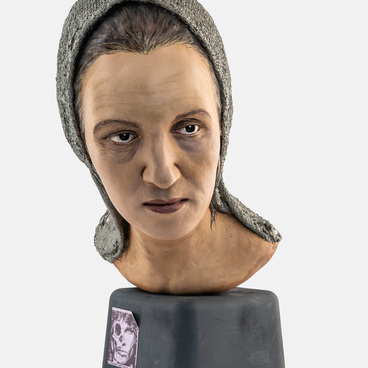In 2015–2016, a group of the “Arkaim” Museum-Reserve and Chelyabinsk State University explored five mounds of the Mandesarka-6 burial ground in the Kizilsky District of the Chelyabinsk Region. The necropolis is located in the steppe zone at the top of the Mandesarka and Kayrakhta rivers basin divide. Burial mounds stretch in one chain from the west to the east for 250 meters. The archeologists registered eleven fills, nine of which are circular in shape, one is oval, and one is “dumbbell-shaped”. “Dumbbell-shaped” structures, as well as circular and rectangular earthwork fences and their versions, are a very distinctive feature of the burial and memorial space of the necropolises of the South Urals nomads who roamed in the second half of the 2nd — 3rd centuries AD. The arrangement of the necropolis structures in a linearly oriented composition, “fitted” into the latitudinal landscape structure, is also traditional for the South Urals burial grounds of this period.
Finding daggers in burials of “late antiquity” are a rare find. Therefore, the dagger from burial mound 4 is very significant for determining the date of the construction of the mound. Its shape is similar to the sword without the pommel and cross-guard. A relatively similar dagger was found in mound 78 of the Novo-Nikolsky mound and the Klichino burial mound in the Upper Don. The dagger from mound 4 is interesting because the preserved traces on its heel suggest the existence of a removable cross-guard. At the end of the grip a bivalve bronze mushroom-shaped pommel was attached, which is also typical for the setting of knives of the Late Sarmatian period of the Volga-Ural region. An iron dagger in combination with a girdle and a double-jointed pommel was found for the first time, which suggests a relatively reliable dating of the burial: the second half of the 2nd — first half of the 3rd century AD.
Nomads actively armed and militarized their society
in order to protect pastures and water sources, to control trade routes and raw
material centers. This is confirmed by the following: in the Mandesarka burial
site 6 men were buried with melee weapons — daggers and swords. The burials of
other nomads abound with weapons, sometimes women’s burials as well. Military
clashes took place both between nomadic tribes and during raids and wars with
the settled population. Ancient civilizations often took advantage of this: the
armies of ancient Persia and the Roman Empire had military contingents from Saka and Sarmatian tribes.


